As we march bravely on through 2013, THN will take a nostalgic yet critical look at the 53 Walt Disney Animated Classics, from SNOW WHITE to WRECK-IT RALPH, through the obscurity of FUN AND FANCY FREE to the Golden Age of BEAUTY AND THE BEAST. These are the films the Walt Disney company are most proud of, the ones that hold a special place in our hearts, the ones that still cost a fortune to buy on DVD. This time, things get a little dark with THE BLACK CAULDRON.
Directed by Ted Berman and Richard Rich
1985/ 80 Minutes
THE BLACK CAULDRON is considered to be one of the biggest box office failures in Disney’s history, and one can sympathise. This film is dark. It’s almost completely against what many people see Disney standing for; it cranks up the drama and the tension while dialling the cute-and-fuzzy factor down to almost nothing. It was the first Disney 53 movie to receive a PG rating. Furious mothers dragged wailing children from test screenings, leading to massive and costly cuts from the film.
Based (loosely) upon the first two books of The Chronicles of Prydain by Lloyd Alexander, THE BLACK CAULDRON was made during a turning point at the Disney studios, and perhaps the lowest ebb of the studio as a whole.
In 1984, businessman Michael Eisner was brought in as Chief Executive Officer of the Walt Disney company, replacing Walt Disney’s own son-in-law, Ron Miller. Miller had been outed by his brother-in-law Roy E. Disney, his financial advisor Stanley Gold and Disney shareholder Sid Bass, in favour of Eisner, former Warner Bros. Vice Chairman Frank Wells, and producer Jeffrey Katzenberg. This new triumvirate set about revitalising the Disney Company, leading to the establishment of Touchstone Pictures, which proved to be one of the House Of Mouse’s most lucrative outlets.
THE BLACK CAULDRON was in production at the time, and was caught up in the tumultuous changes brought about by Katzenberg, who had been charged with turning around Disney’s ailing Feature Animation unit.
Katzenberg’s influence would bring about the studio’s “Renaissance” of the late 20th century, a run of Disney’s most critically acclaimed and commercially successful animated films, culminating with TARZAN in 1999. After a bitter falling out with Eisner – following the sudden and tragic death of Frank Wells in 1994 – Katzenberg left Disney and went on to found DreamWorks SKG with Steven Spielberg and David Geffen, before taking control of animation operations. He is credited as producer on some of the studio’s greatest works, such as THE PRINCE OF EGYPT and the first two SHREK films, effectively establishing them as perhaps Disney’s greatest rival.
THE BLACK CAULDRON had a lot of potential, and had high hopes riding on it. It was intended to be its generation’s SNOW WHITE, bringing forth a new wave of animators with a masterpiece to stand the test of time. Sadly, that wasn’t to be. It was seen by many as the death knell for the studio; there were even discussions on closing it down.
The tragic thing is THE BLACK CAULDRON was positioned perfectly; latching onto the dark fairytale trend alongside LEGEND (1985) and THE DARK CRYSTAL (1982), not to mention the work of former Disney animator Don Bluth and independent director Ralph Bakshi, it could well have been the turning point it was hoped to be.
Had THE BLACK CAULDRON been made now, and with a steadier hand, it would feel right at home alongside the likes of SNOW WHITE AND THE HUNTSMEN and even the HARRY POTTER series.
Considering the rights to the books are still held by Disney, it’s not entirely out of the question, and with the new trend of bringing back classic Disney tales with a new twist in the tale, perhaps The Chronicles of Prydain could follow in MALEFICENT’s wake.
Hey, a guy can dream.
SYNOPSIS: Opening much like any other sword-and-sorcery epic of the time, we’re treated to a dimly lit introduction to the world, with a solemn voiceover telling of the titular Black Cauldron, which bears the power to reanimate the dead. This Cauldron is being sought by The Horned King, and has been kept hidden for centuries.
We’re soon introduced to our young hero, Taran, apprentice to the wizard Dallben and guardian of Hen Wen, a rather cute little pig with the power to see into the future. Using this power, Dallben learns that The Horned King has discovered Hen Wen’s power, and instructs Taran to take her to safety in a secluded woodland cottage.
Taran takes his new charge seriously, but can’t help imagining himself the great hero he’s destined to become in the books. Unfortunately, his daydreaming causes him to lose Hen Wen, who is promptly captured and taken to The Horned King’s castle. As Taran begins his quest to rescue Hen Wen, he runs into Gurgi, a half-man, half-Yorkshire Terrier with the voice of Donald Duck. The little creature latches onto Taran, but bottles it when they reach the castle.
Taran ventures in alone, but is discovered. At the behest of The Horned King, and under threat of Hen Wen’s beheading, Taran relents, but Hen Wen’s vision is interrupted before she can reveal the Cauldron’s location. Taran flees with Hen Wen, and manages to get her out of the castle, but is captured himself.
As he languishes in a dungeon cell feeling sorry for himself, he is released by Princess Eilonwy, a young girl his age and something of a magic-user herself, though it’s never really explored in the film. The kids venture into the catacombs, where Taran finds a sword, which is soon revealed to have magic powers all of its own (which is just as well, as Taran would have trouble fighting his way out of a paper bag at this point). As they make their escape, they also free the bumbling bard Fflewddur Fflam, and vanish into the forest. The Horned King, much to his minions’ surprise, is pleased, knowing the boy will seek out the pig, and then the Cauldron. All he has to do is follow them.
As they recover from their escape, Taran is reunited with Gurgi, who insists he’s found Hen Wen’s trail. Taran is suspicious, but Eilonwy follows the little Ewok to a secluded pool, which turns out to be the entrance to the underground kingdom of the Fair Folk (fairies, basically, though nothing like Tinkerbell; a cameo appearance would have been fun). It transpires that Hen Wen had also stumbled upon their kingdom, and is happily, if briefly, reunited with Taran. When the Fair Folk’s King Eiddileg reveals the Cauldron’s location, Taran vows to destroy it himself, and is promptly joined on this quest by Eilonwy, Fflewddur, Gurgi, and Eiddeleg’s right-hand man, the grouchy Doli, who is assigned to lead them to the Cauldron. Hen Wen is returned home.
Finding their way to The Marshes of Morva, the band discover the Cauldron is under the care of three witches, one of whom takes a shine to Fflewddur. Doli promptly abandons the group.
After some bargaining, the Witches agree to hand over the Cauldron, in return for Taran’s magic sword. The witches depart, taking their hut with them and leaving them with the Cauldron. Only then do they mention the Cauldron is indestructible, and its power can only be broken by an act of supreme sacrifice; someone must climb into the Cauldron of his own free will, knowing that he will never come out alive.
Rather than make that sacrifice himself, Taran sits around with the others, feeling sorry for himself again. His companions show their faith in him, but just as he and Eilonwy are about to admit their feelings for each other, The Horned King’s forces take them captive.
(For such a rag-tag bunch over overweight, drunken and mentally deficit grunts, they’re apparently pretty stealthy.)
Back at the castle, Taran and the others are strung up overlooking the Cauldron, as the Horned King begins his final campaign, raising an army of undead Cauldron-Born soldiers, which begin to shamble out of the castle. Taran is freed by Gurgi, who managed to evade capture and follow them. Taran resolves to make the ultimate sacrifice and cast himself into the Cauldron, but Gurgi gets their first, leaping into the Cauldron himself. The dark forces begin to swirl around the Cauldron, its magic being drawn back from whence it came. Taran orders the others to go, as he himself approaches the Cauldron, desperately hoping there’s a chance to save Gurgi.
As The Horned King watches his forces disintegrate below him, he returns to the hall and sees Taran, struggling to keep his footing as the Cauldron draws him closer. The Horned King lunges at Taran, but is caught in the Cauldron’s pull himself, and is destroyed.
Taran is reunited with Eilonwy and Fflewddur, but the castle begins to crumble around them, and they barely make it out alive.
Just as the three survivors make it to shore, the now inert Cauldron rises to the surface. The Witches return to reclaim the Cauldron, but Fflewddur insists they bargain for the Cauldron. At first they offer Taran his sword, and for a moment, he considers it, but he declines, giving up the power and the chance to be a great hero, to have Gurgi back. After some goading from Fflewddur, the Witches depart, leaving only Gurgi’s lifeless body. Taran holds the imp to him, and immediately has his pockets searched by a hungry Gurgi. Amid the celebrations, Gurgi playfully forces the kids to kiss, and hand in hand, Taran, Princess Eilonwy, Fflewddur Fflam and Gurgi make their way home, where Dallben and Doli watch them through a vision created by Hen Wen, and praise the lad for his courage and heroism.
The End.
(At this point my spell-checker breaths a sigh of relief.)
Lessons Learned
1. Always make sure you can control the MacGuffin before you try to use it.
2. Always read the fine print on a bargain.
3. Don’t judge everyone by appearance alone; the most powerful beings can be the least obvious ones.
The Heroes
![]()
Taran, voiced by Grant Bardsley, is a pretty standard Young Hero. He’s a dreamer in a mundane job, given charge of something powerful and precious, which he promptly loses and has to get back, providing the impetus of the plot. He’s not a particularly good swordsman; his (stolen) magic sword does most of the work for him, but he comes to admit his limitations, to himself as well as everyone else come the final act.
By Taran’s own admission, the real hero is Gurgi, voiced by John Byner. One of the only characters to appear in all five books in the series, the little furball starts off by being little more than an annoyance, but actually has more character development than anyone else, as he comes to sacrifice himself for his “master”, Taran. Cute and endearing, Gurgi is the kind of kid-friendly character who would have gotten his own movie by now if THE BLACK CAULDRON itself had been a success.
The Heroine
![]()
Princess Eilonwy, voiced by veteran voice actress Susan Sheridan, is perhaps one of the best Disney Princesses. She’s certainly one of my favourites, and deserves the title more than others I can think of in that sub-Kennel Club travesty of feminism. Perhaps its better that she was passed over for the Disney Princess franchise; look what they’ve done to Merida.
Ranting aside, Eilonwy is a rather headstrong young lass, beautiful and brave, but she comes across as a bit of an airhead at the start; she seems quite oblivious to the real danger she’s in, and chides Taran for taking a sword from the crypt of a fallen king. As things progress, she falls into many of the fantasy princess tropes, but not the Disney ones, funnily enough.
The Villain
![]()
![]()
The Horned King is a one-of-a-kind Disney villain. Voiced by the legend that is John Hurt, he wins bonus points on intimidation alone; just look at the guy.
He looks like the love-child of Chernabog and Maleficent, his sickly green skin pulled tight over a skeletal frame. Hurt’s quiet, understated performance elevates the character somewhat, and unlike many other villains, he’s not prone to maniacal laughter or fits of rage, though he does seem to harbour a rather dark sense of humour.
In many ways, he’s the archetypal fantasy villain; lurking in the shadows while his seemingly endless supply of soldiers and henchmen do the work for him, as he plots and schemes, and dreams of the day those dreams become reality.
But, alas and alack, The Horned King loses out on points for, well, being a bit pathetic really, as Disney villains go. He doesn’t actually do anything for most of the film, spending much of his time lurking in the shadows. When he does finally enter the fight himself, he’s almost immediately overwhelmed by forces much greater and darker than his own.
HIS FATE? Perhaps the most gruesome of any Disney villain; as he clings to the Cauldron’s edge, his flesh is torn away from his bones, which crumble into piece before being engulfed in a fireball.
Sidekicks/ Henchmen
![]()
Having set Gurgi up as secondary hero, we’re left with Fflewddur, voiced by the late Nigel Hawthorne. Very much the comic foil, he gets a lot of the best lines and seems to be in a constant war of words with his harp, which seems to have a mind of its own. Nonetheless, while he may be completely hopeless in a fight, he’s quick-witted enough to win one over on the Witches.
I feel I’ve neglected Creeper, right-hand imp to The Horned King. Perhaps that’s because he was never in the original book to begin with, and was added for the film. In any case, Creeper is a henchman of the Igor mold; small, deformed, snivelling and scheming, a walking scratching post for the King and target practise for his soldiers, despite his apparent standing as the King’s lieutenant.
I guess you could call Creeper the first in a line of memorable Disney henchmen; Fidget the Bat, LeFou, Iago, Pain and Panic, the downtrodden yet loyal minion who often gets a chance to reform. Some of them even take it.
Laughs
![]()
THE BLACK CAULDRON is a dark movie, and as such is quite light on comedy; as you’d come to expect, most of it’s at the expense of Fflewddur and Creeper, though there is some perverse comedy to be found in The Horned King’s demise.
The Witches sort-of sit on the fence between being scary and funny; one of them (the, uh, larger-framed one) is by far the lightest of the three, though she’s just as scary as the others when she’s offended.
Scares
![]()
![]()
The Horned King is the stuff that nightmares are made of. Regardless of his effectiveness as a villain, nothing else compares.
Let’s see, what else. Oh, yeah, the freaking army of shambling corpses, leaping up from the Cauldron’s mire and into the nightmares of children for two generations.
They have no place in a Disney movie, and that’s one reason why they’re so damn scary; it’s like they’ve invaded from a Ralph Bakshi movie. It’s a shame we never get to see them do anything, but then again, maybe it’s a blessing.
Music
![]()
Unlike most other Disney animated films, the film contained no songs, Fflewddur’s attempts not withstanding. The score was composed and conducted by Elmer Bernstein, hot off the success of his Academy Award-nominated score for TRADING PLACES (1983). He also did the score for GHOSTBUSTERS, and it shows; Bernstein utilised the same electronic instrument, the ondes Mertenot for both scores. It sounds a bit like the opening theme to MIDSOMER MURDERS.
Moral/Educational value
![]()
Not a whole lot to be honest. Nothing that really sticks in the mind; there’s the usual stuff about not taking things – or people – for granted, and how every great quest has a humble beginning. Taran isn’t the best of role models, and neither is Eilonwy, but between them they make a good pair, and kids could do worse.
Plot
![]()
“First, I have to say, there is no resemblance between the movie and the book. Having said that, the movie in itself, purely as a movie, I found to be very enjoyable. I had fun watching it. What I would hope is that anyone who sees the movie would certainly enjoy it, but I’d also hope that they’d actually read the book. The book is quite different. It’s a very powerful, very moving story, and I think people would find a lot more depth in the book.”
Lloyd Alexander, writer of the original novels.
And that’s pretty much it. It’s based on the first two books, but takes a few liberties, much like every other Disney movie based on a book. THE BLACK CAULDRON has a perfectly good storyline with a few niggling plot holes, but it’s not the most inventive.
Legacy
![]()
A video game was released in 1986 by Sierra, following a similar path to the film, and was actually quite innovative for its time, providing multiple plot endings depending on the player’s choices, something unheard of at the time, but is pretty much the standard now.
Its soundtrack fared better, receiving several CD releases over the years after receiving good reviews from music critics.
As for the film itself, it gained its own small fanbase (of which I consider myself a member) but has almost become the forgotten middle child of the Disney 53.
FINAL SCORE 32/53
Thanks to
Slade.com
IMDb
Wikipedia
Disney.wikia

2 Comments
Leave a Reply
Leave a Reply
Latest Posts
-


Film Trailers
/ 8 hours agoM. Night Shyamalan’s ‘Trap’ trailer lands
Anew experience in the world of M. Night Shyamalan.
By Paul Heath -


Film News
/ 23 hours agoFirst ‘Transformers One’ teaser trailer debuts IN SPACE!
The animated feature film is heading to cinemas this September.
By Paul Heath -


Film Reviews
/ 23 hours ago‘Abigail’ review: Dirs. Matt Bettinelli-Olpin & Tyler Gillett (2024)
Matt Bettinelli-Olpin and Tyler Gillett direct this new horror/ heist hybrid.
By Awais Irfan -


Film Trailers
/ 1 day agoNew trailer for J.K. Simmons-led ‘You Can’t Run Forever’
A trailer has dropped for You Can’t Run Forever, a new thriller led by...
By Paul Heath



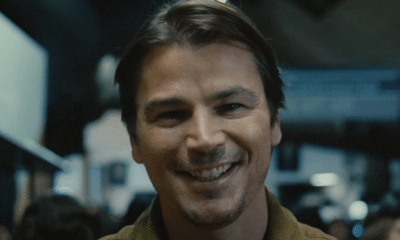

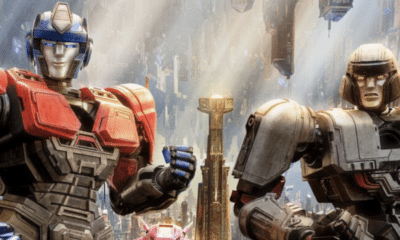

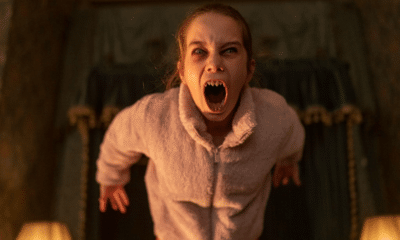

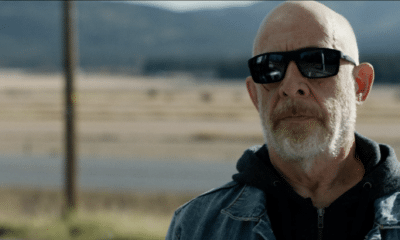

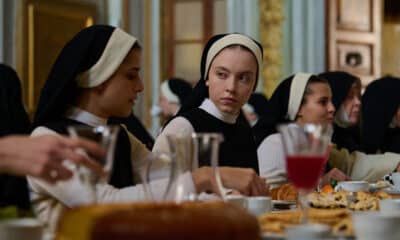

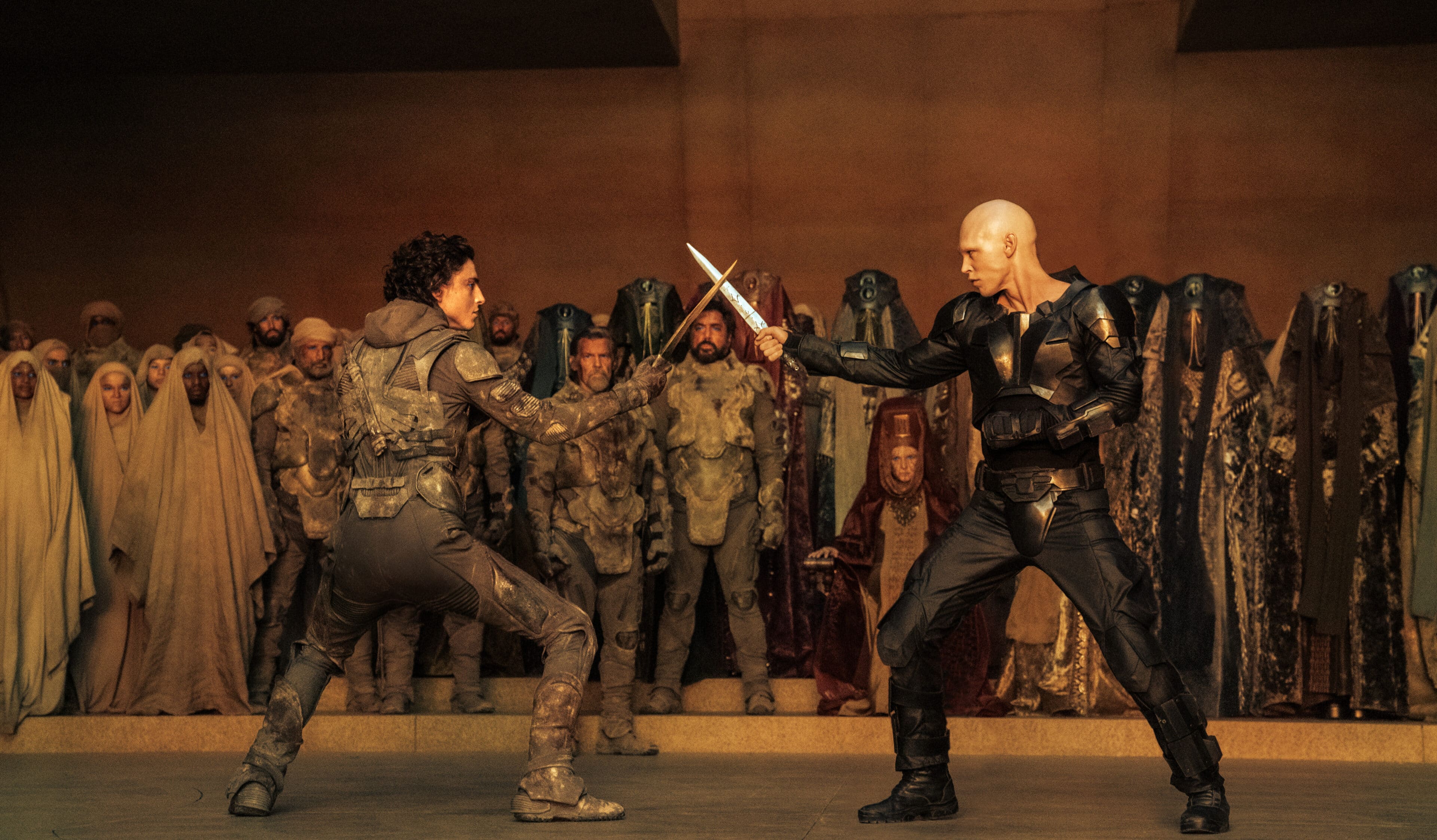

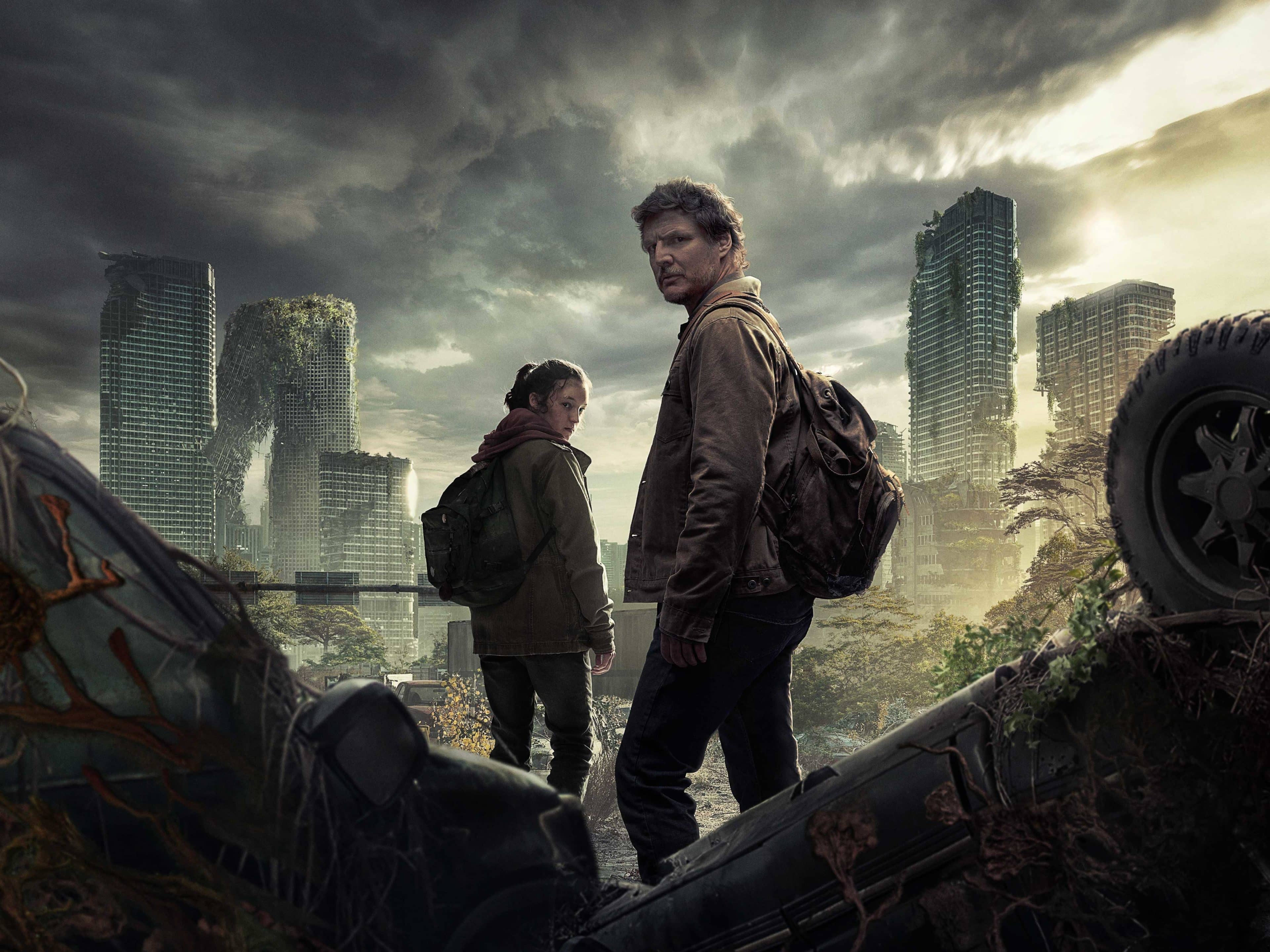
Pingback: Just Media Love | Disney 53 Double Feature Part II: The Black Cauldron
Pingback: Disney 53 Double Feature Part II: The Black Cauldron « MindCorp | Newsfeed